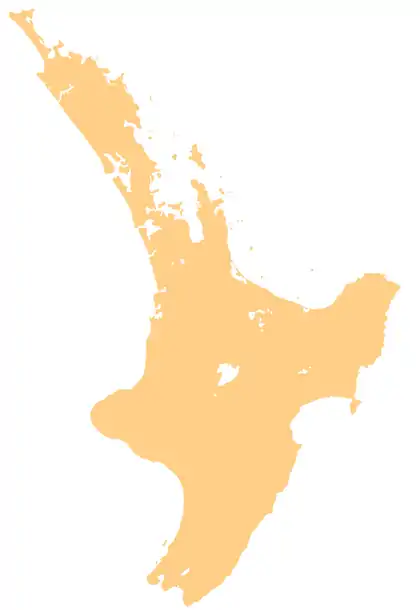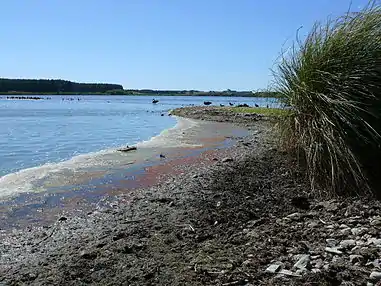Lake Horowhenua
Lake Horowhenua is in the Horowhenua District, an area of the southern Manawatū-Whanganui region in New Zealand's North Island. It covers an area of 3.9 square kilometres (1.5 sq mi).
| Lake Horowhenua | |
|---|---|
 Lake Horowhenua | |
 Lake Horowhenua | |
| Location | Horowhenua District, North Island |
| Coordinates | 40.6100°S 175.2547°E |
| Basin countries | New Zealand |
| Surface area | 3.9 km2 (1.5 sq mi) |
The lake, also known as Punahau, is an aeolian lake that lies on a sandy plain 2 kilometres (1.2 mi) west of Levin and 5 kilometres (3 mi) from the coast of the Tasman Sea. It is a shallow lake, only some 2 metres (7 ft) deep, fed by various small streams, and is drained by the Hokio Stream.

History
The lake was once surrounded by podocarp forest as the centre of a rich wetland ecosystem. Today the trees are gone and the wetland has been substantially drained. The lake is owned by the Māori Muaūpoko iwi, who, with the help of the Horowhenua Lake Trust, are actively attempting to restore the wetland system (which also contains the smaller Lake Papaitonga) to its former state, as a conservation area.
In the 1820s the Muaūpoko were attacked by Te Rauparaha and the Ngāti Toa. Two island pā on the lake were destroyed.[1]
Water quality
Between 1952 and 1987 treated sewage from Levin was dumped into the lake. This has contributed significantly to the current eutrophic state of the lake.[2][3][4] Between 2020 and 2030, the water of Lake Horowhenua is allowed to be maintained below some national bottom lines for water quality.[5]
References
- http://www.sustainablefuture.info/includes/download.aspx?ID=106520
- "Case Study 3: Waipunahau (Lake Horowhenua): restoring the mauri" (PDF). Ministry for the Environment. Archived from the original (PDF) on 23 May 2010. Retrieved 29 April 2010.
- "Lake of shame - The Listener". Noted. Archived from the original on 29 January 2019. Retrieved 18 September 2018.
- "Lake of shame: New report vindicates the man fighting to save Lake Horowhenua". Noted. Archived from the original on 18 September 2018. Retrieved 18 September 2018.
- "New rules in place to restore healthy rivers". Archived from the original on 9 August 2020. Retrieved 7 August 2020.